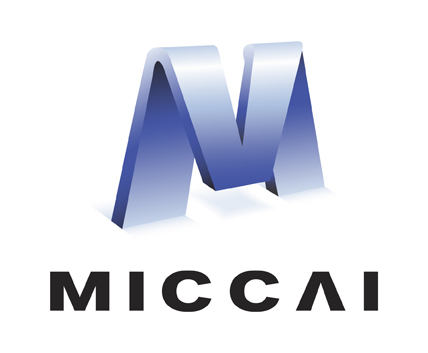Abstract
The destitution of image data and corresponding expert annotations limit the training capacities of AI diagnostic models and potentially inhibit their performance. To address such a problem of data and label scarcity, generative models have been developed to augment the training datasets. Previously proposed generative models usually require manually adjusted annotations (e.g., segmentation masks) or need pre-labeling. However, studies have found that these pre-labeling based methods can induce hallucinating artifacts, which might mislead the downstream clinical tasks, while manual adjustment could be onerous and subjective. To avoid manual adjustment and pre-labeling, we propose a novel controllable and simultaneous synthesizer (dubbed CS\(^2\)) in this study to generate both realistic images and corresponding annotations at the same time. Our CS\(^2\) model is trained and validated using high resolution CT (HRCT) data collected from COVID-19 patients to realize an efficient infections segmentation with minimal human intervention. Our contributions include 1) a conditional image synthesis network that receives both style information from reference CT images and structural information from unsupervised segmentation masks, and 2) a corresponding segmentation mask synthesis network to automatically segment these synthesized images simultaneously. Our experimental studies on HRCT scans collected from COVID-19 patients demonstrate that our CS\(^2\) model can lead to realistic synthesized datasets and promising segmentation results of COVID infections compared to the state-of-the-art nnUNet trained and fine-tuned in a fully supervised manner.
S. Walsh and G. Yang—Co-last senior authors.
Access this chapter
Tax calculation will be finalised at checkout
Purchases are for personal use only
Similar content being viewed by others
References
Bailo, O., Ham, D., Min Shin, Y.: Red blood cell image generation for data augmentation using conditional generative adversarial networks. In: Proceedings of the IEEE/CVF Conference on Computer Vision and Pattern Recognition Workshops (2019)
Brock, A., Donahue, J., Simonyan, K.: Large scale GAN training for high fidelity natural image synthesis. arXiv preprint arXiv:1809.11096 (2018)
Tsaftaris, S.A., Gooya, A., Frangi, A.F., Prince, J.L. (eds.): SASHIMI 2017. LNCS, vol. 10557. Springer, Cham (2017). https://doi.org/10.1007/978-3-319-68127-6
Dalmaz, O., Yurt, M., Çukur, T.: ResViT: residual vision transformers for multi-modal medical image synthesis. arXiv preprint arXiv:2106.16031 (2021)
Demir, U., Unal, G.: Patch-based image inpainting with generative adversarial networks. arXiv preprint arXiv:1803.07422 (2018)
Goodfellow, I., et al.: Generative adversarial nets. In: Advances in Neural Information Processing Systems, vol. 27 (2014)
He, K., Zhang, X., Ren, S., Sun, J.: Deep residual learning for image recognition. In: Proceedings of the IEEE Conference on Computer Vision and Pattern Recognition, pp. 770–778 (2016)
Huang, X., Belongie, S.: Arbitrary style transfer in real-time with adaptive instance normalization. In: Proceedings of the IEEE International Conference on Computer Vision, pp. 1501–1510 (2017)
Huo, Y., Xu, Z., Bao, S., Assad, A., Abramson, R.G., Landman, B.A.: Adversarial synthesis learning enables segmentation without target modality ground truth. In: 2018 IEEE 15th International Symposium on Biomedical Imaging (ISBI 2018), pp. 1217–1220. IEEE (2018)
Isensee, F., Kickingereder, P., Wick, W., Bendszus, M., Maier-Hein, K.H.: No New-Net. In: Crimi, A., Bakas, S., Kuijf, H., Keyvan, F., Reyes, M., van Walsum, T. (eds.) BrainLes 2018. LNCS, vol. 11384, pp. 234–244. Springer, Cham (2019). https://doi.org/10.1007/978-3-030-11726-9_21
Isola, P., Zhu, J.Y., Zhou, T., Efros, A.A.: Image-to-image translation with conditional adversarial networks. In: Proceedings of the IEEE Conference on Computer Vision and Pattern Recognition, pp. 1125–1134 (2017)
Johnson, J., Alahi, A., Fei-Fei, L.: Perceptual losses for real-time style transfer and super-resolution. In: Leibe, B., Matas, J., Sebe, N., Welling, M. (eds.) ECCV 2016. LNCS, vol. 9906, pp. 694–711. Springer, Cham (2016). https://doi.org/10.1007/978-3-319-46475-6_43
Kanezaki, A.: Unsupervised image segmentation by backpropagation. In: 2018 IEEE International Conference on Acoustics, Speech and Signal Processing (ICASSP), pp. 1543–1547. IEEE (2018)
Karras, T., Laine, S., Aila, T.: A style-based generator architecture for generative adversarial networks. In: Proceedings of the IEEE/CVF Conference on Computer Vision and Pattern Recognition, pp. 4401–4410 (2019)
Ma, J., et al.: Towards efficient Covid-19 CT annotation: a benchmark for lung and infection segmentation. arxiv 2020, arXiv preprint arXiv:2004.12537 (2020)
Pandey, S., Singh, P.R., Tian, J.: An image augmentation approach using two-stage generative adversarial network for nuclei image segmentation. Biomed. Signal Process. Control 57, 101782 (2020)
Roth, H., et al.: Rapid artificial intelligence solutions in a pandemic-the Covid-19-20 lung CT lesion segmentation challenge (2021). researchsquare.com
Roth, H.R., et al.: A new 2.5D representation for lymph node detection using random sets of deep convolutional neural network observations. In: Golland, P., Hata, N., Barillot, C., Hornegger, J., Howe, R. (eds.) MICCAI 2014. LNCS, vol. 8673, pp. 520–527. Springer, Cham (2014). https://doi.org/10.1007/978-3-319-10404-1_65
Shin, H.-C., et al.: Medical image synthesis for data augmentation and anonymization using generative adversarial networks. In: Gooya, A., Goksel, O., Oguz, I., Burgos, N. (eds.) SASHIMI 2018. LNCS, vol. 11037, pp. 1–11. Springer, Cham (2018). https://doi.org/10.1007/978-3-030-00536-8_1
Sun, Y., Yuan, P., Sun, Y.: MM-GAN: 3D MRI data augmentation for medical image segmentation via generative adversarial networks. In: 2020 IEEE International Conference on Knowledge Graph (ICKG), pp. 227–234. IEEE (2020)
Zhang, Y., et al.: DatasetGAN: efficient labeled data factory with minimal human effort. In: Proceedings of the IEEE/CVF Conference on Computer Vision and Pattern Recognition, pp. 10145–10155 (2021)
Acknowledgement
This study was supported in part by the ERC IMI (101005122), the H2020 (952172), the MRC (MC/PC/21013), the Royal Society (IEC\(\backslash \)NSFC\(\backslash \)211235), the NVIDIA Academic Hardware Grant Program, the SABER project supported by Boehringer Ingelheim Ltd, and the UKRI Future Leaders Fellowship (MR/V023799/1).
Author information
Authors and Affiliations
Corresponding author
Editor information
Editors and Affiliations
1 Electronic supplementary material
Below is the link to the electronic supplementary material.
Rights and permissions
Copyright information
© 2022 The Author(s), under exclusive license to Springer Nature Switzerland AG
About this paper
Cite this paper
Xing, X. et al. (2022). CS\(^2\): A Controllable and Simultaneous Synthesizer of Images and Annotations with Minimal Human Intervention. In: Wang, L., Dou, Q., Fletcher, P.T., Speidel, S., Li, S. (eds) Medical Image Computing and Computer Assisted Intervention – MICCAI 2022. MICCAI 2022. Lecture Notes in Computer Science, vol 13438. Springer, Cham. https://doi.org/10.1007/978-3-031-16452-1_1
Download citation
DOI: https://doi.org/10.1007/978-3-031-16452-1_1
Published:
Publisher Name: Springer, Cham
Print ISBN: 978-3-031-16451-4
Online ISBN: 978-3-031-16452-1
eBook Packages: Computer ScienceComputer Science (R0)





